
In a very center of Java Island, on a plain near always fuming Merapi volcano, there stands Borobudur - the world's largest monument of Buddhist architecture.
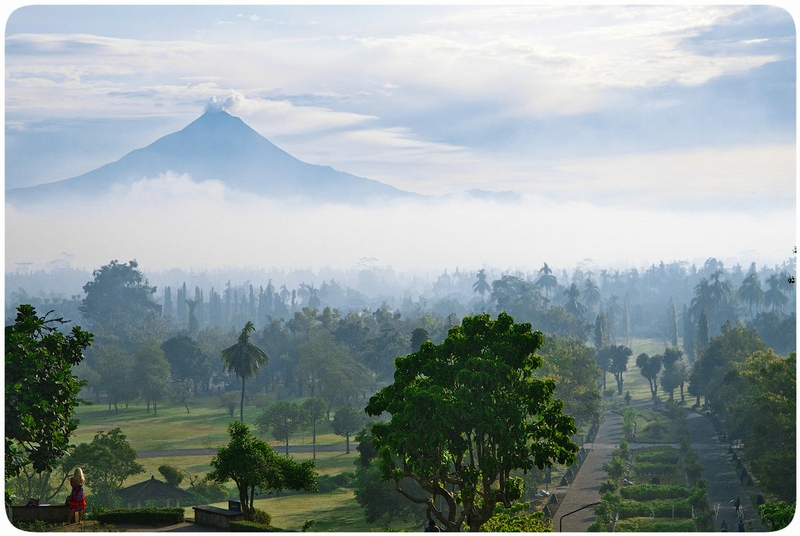
Borobudur was erected in the end of the 8th - the beginning of the 9th century during the ruling of the Sailendras. The ruler was a Buddhist and as he wanted to praise his belief, he started this grand building. One of the legends has it that from times immemorial Java Island had been floating in the World Ocean here and there, and the local residents were quite concerned about it. That's why the island was hammered into the center of the Earth. Later around the nail a hill was formed and Borobudur was built on it.
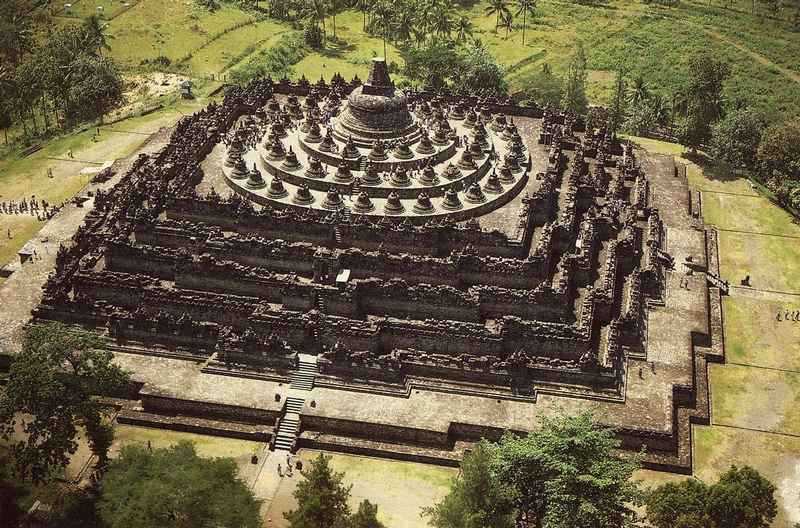
Around 2 million stone blocks make up the stepped pyramid consisting of 8 levels, which symbolizes the Buddhist idea of 8 steps to happiness. Its foundation is 123 m in diameter. Its height - 32 m. Its socle symbolizes the world of carnal desires, the next four tiers - the man's struggling against them, and the three round terraces - the last stages to reaching nirvana.
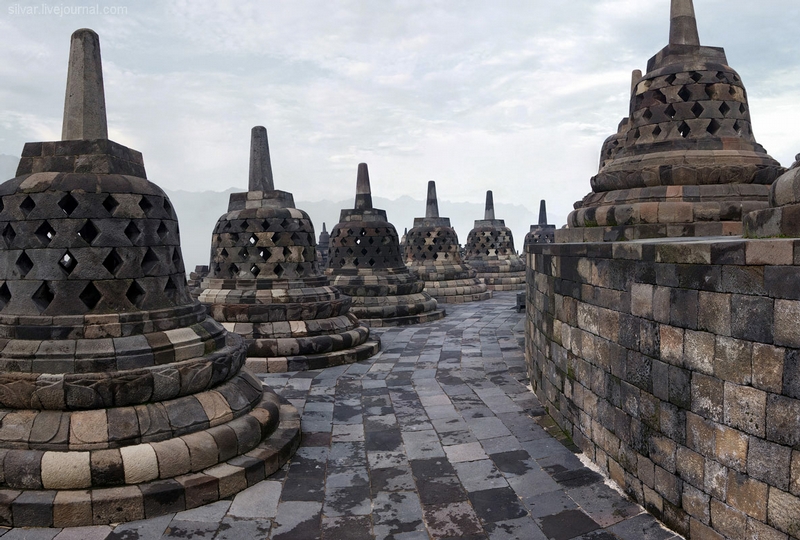
The temple contains about 500 figures of Buddha - all are with different hands positions.
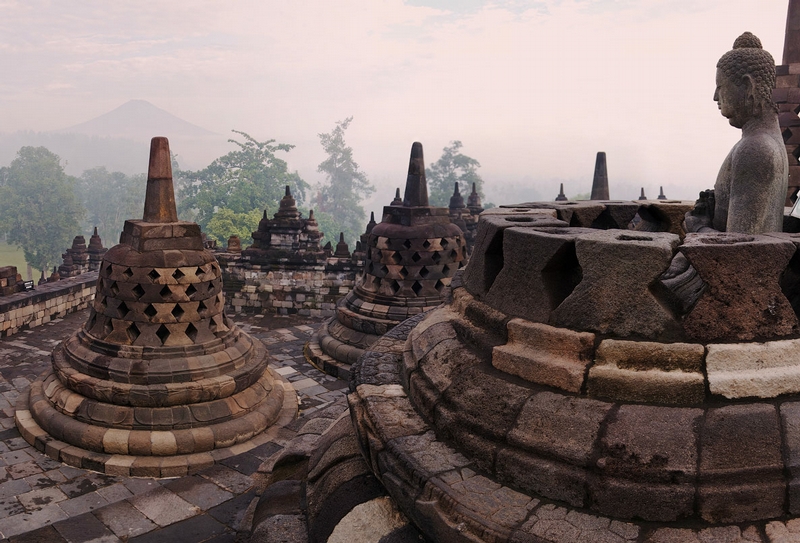
Here the Buddhist "stupas" have a shape of bells with a stone spire at the top. They are called "dagobas". Under each of them there is a stone Buddha. Concealment of the holy statues under the stone covers conveys the idea of detachment and isolation from the material world.
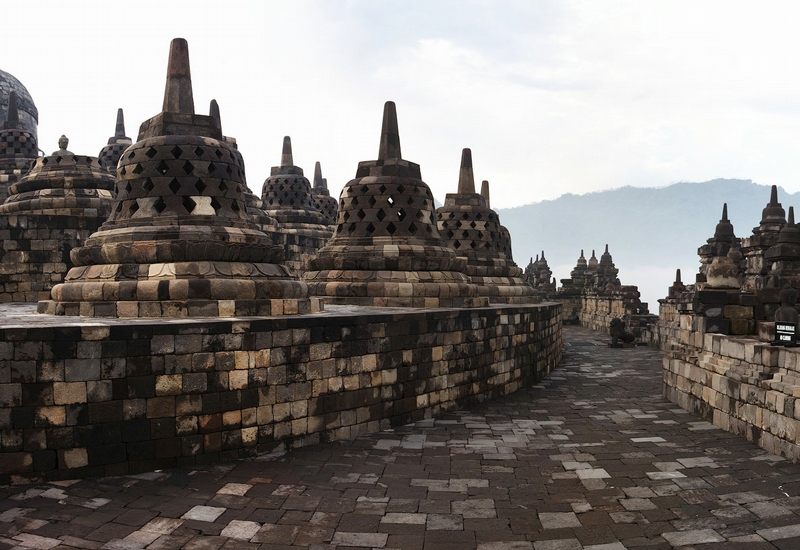
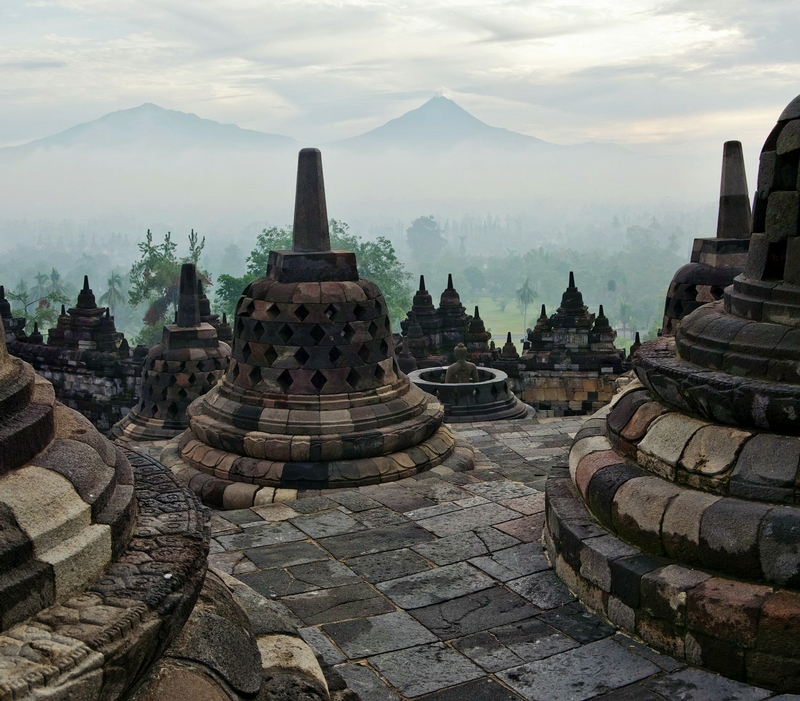
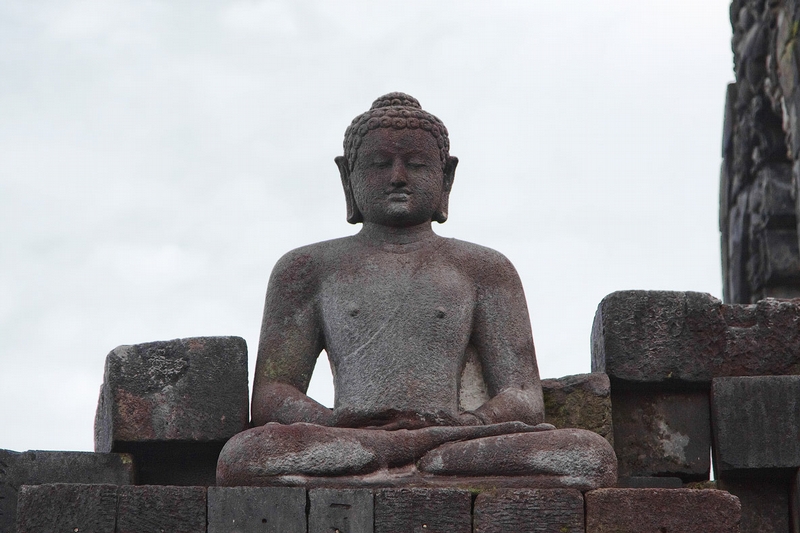
In the niches of the lower terraces 409 more statues are located. Both their figures and faces are idealized and deprived of individuality. Each has a round head covered with curly hair, half-closed almond-shaped eyes and graceful hands. No details. No features. All the statues look calm and have broad shoulders and a slim waist.
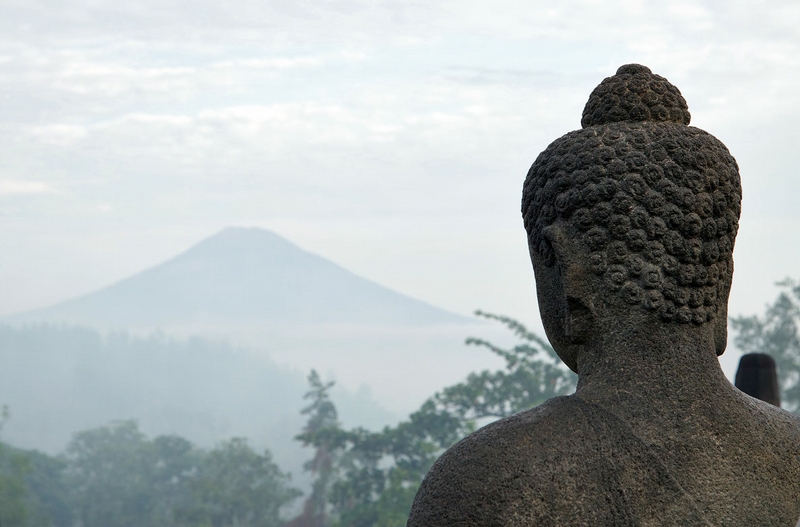
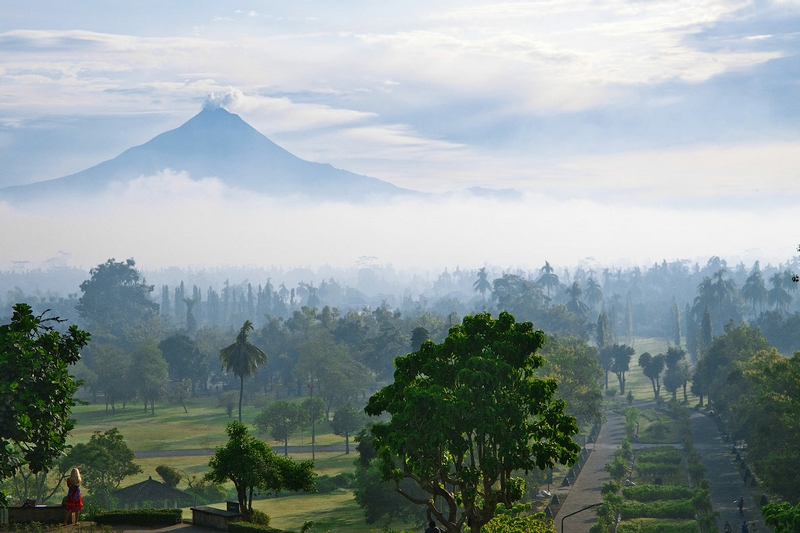
A wonderful view on the valley.
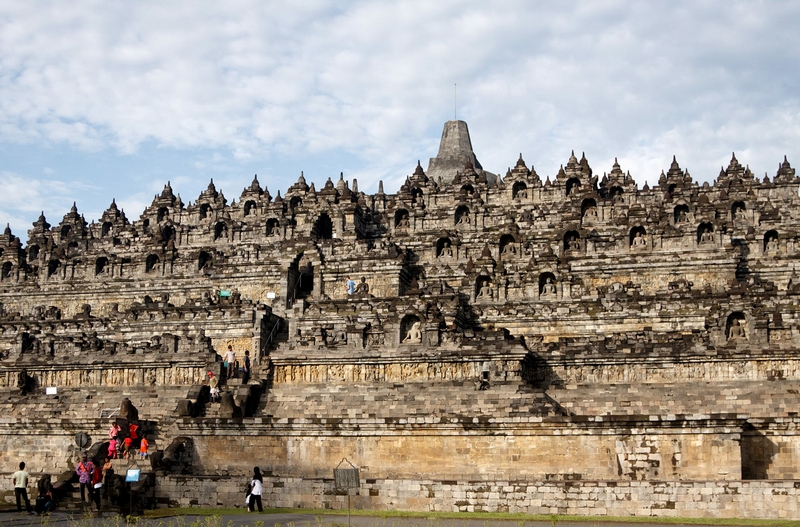
Entrance is a symbol of the beginning. Borobudur has no main entrance because life has no beginning as well. A pilgrim can start his way around the terraces of the sanctuary from all the four arcs located at different cardinal points. But the end of the way is near the central dagoba. It means life has no beginning but has the end.
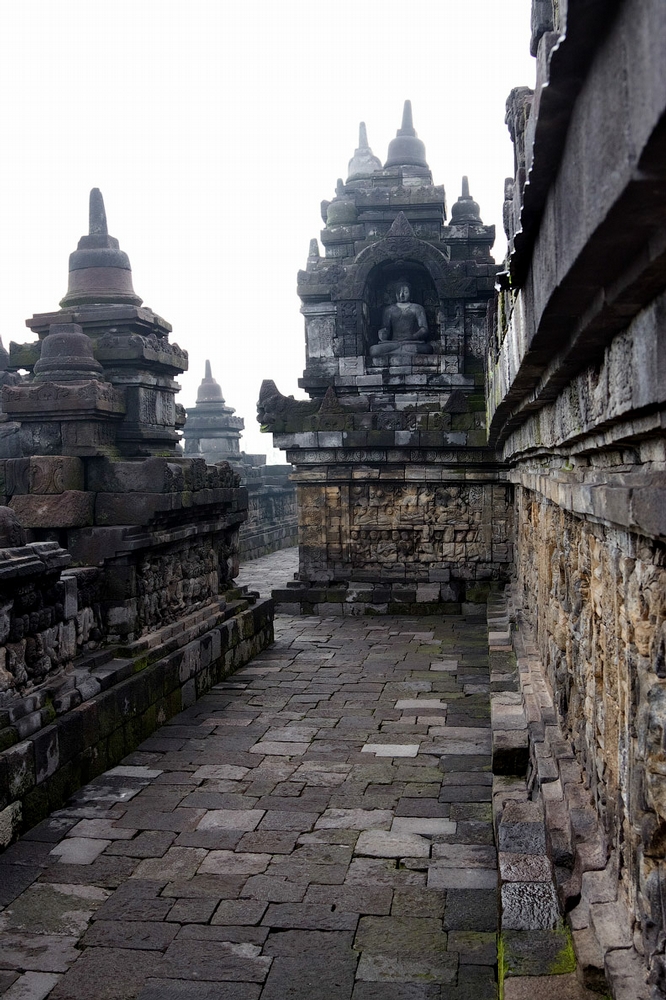
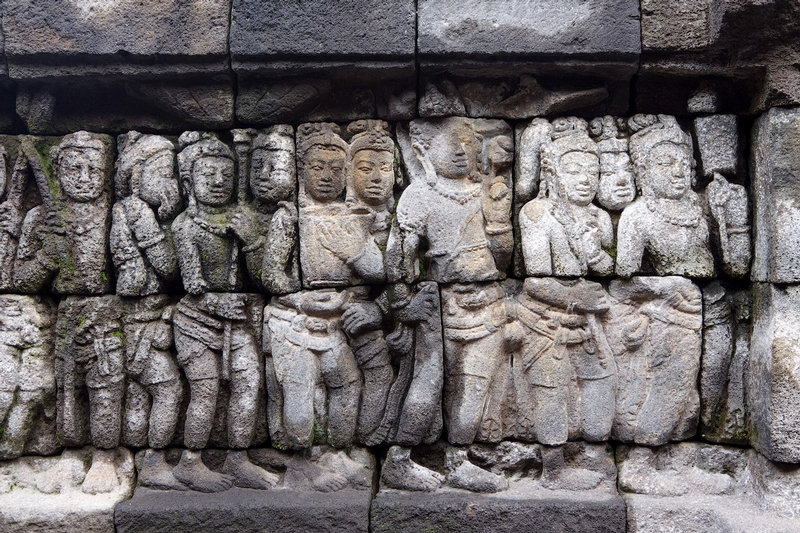
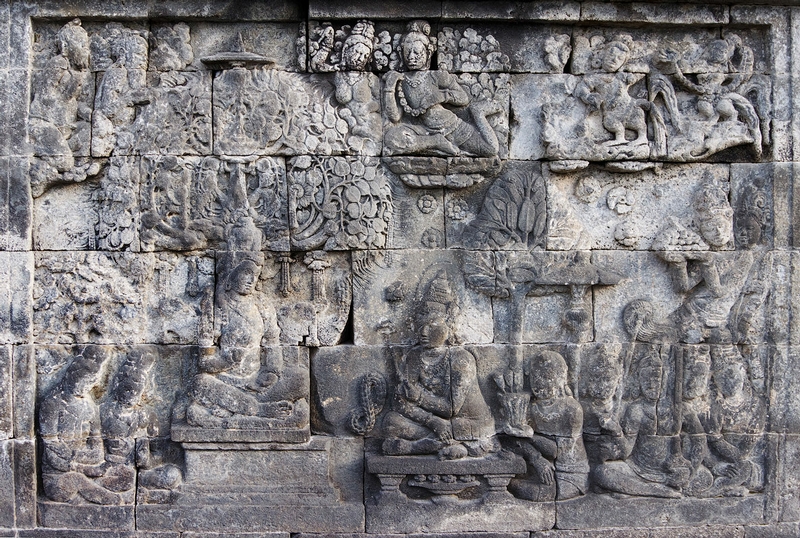
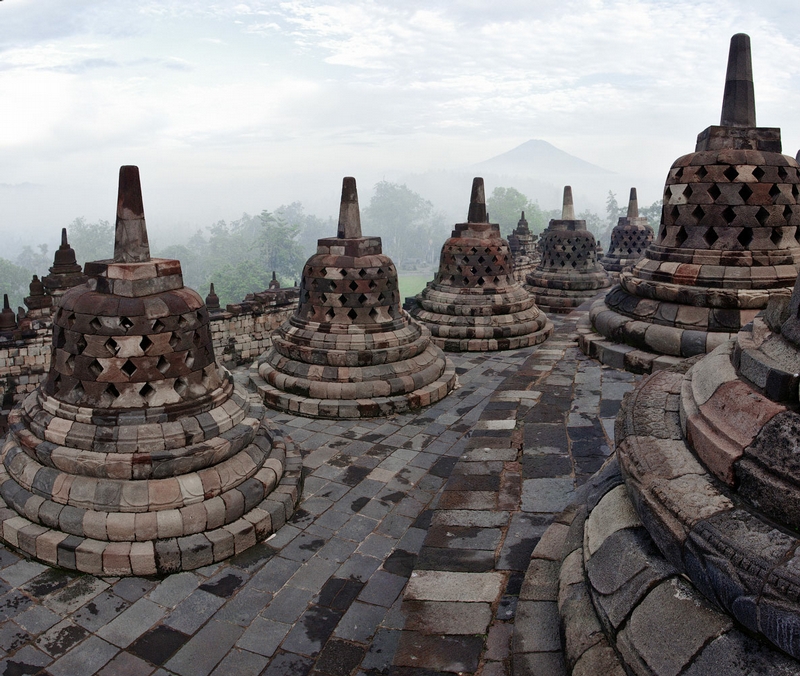
Having passed through 5 levels we kind of leave the Earth territory and move to the open concentric terraces, symbolizing celestial regions - the second level of the temple.
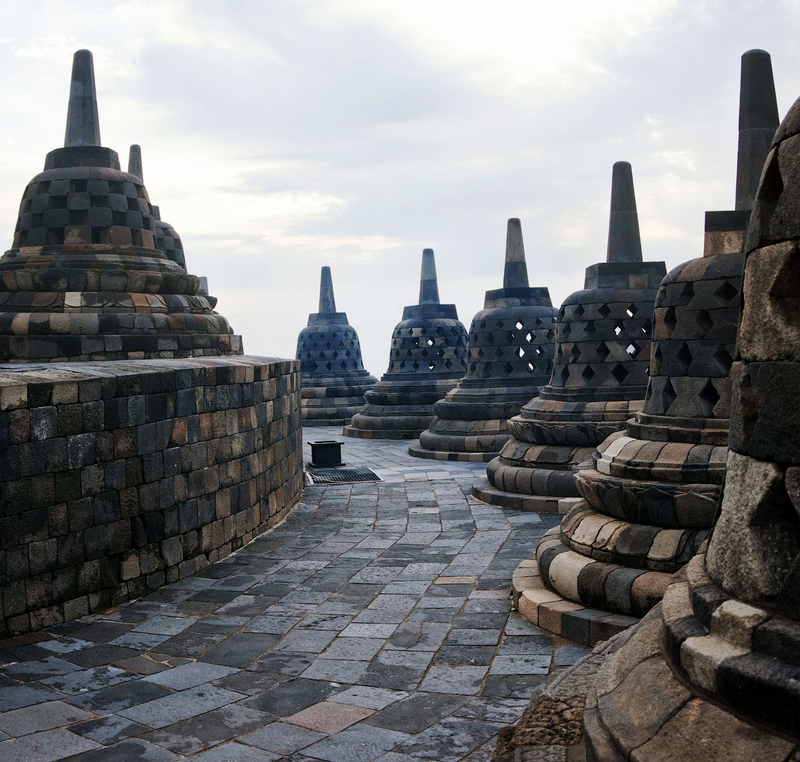
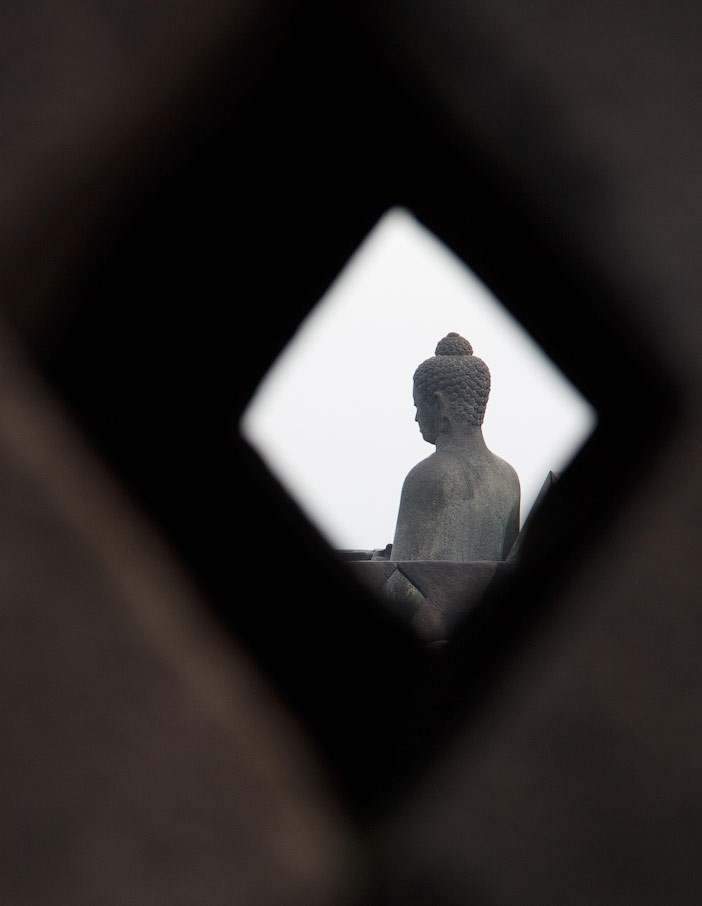
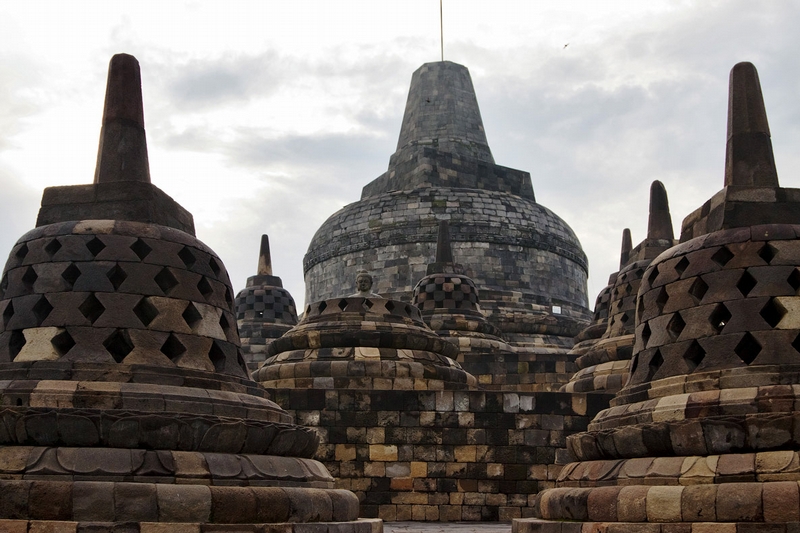
A fully closed central dagoba symbolizes the third inconceivable superior world. The last and the biggest statue of Buddha is located inside it. A strange history is connected with this statue. When the temple was discovered for the first time the statue was found lying on the floor without a head. Some say the head was cut off because of the strong earthquake. But what is strange, nobody could ever find it again. Just for your information, it couldn't be stolen as its size makes it impossible to transport it.
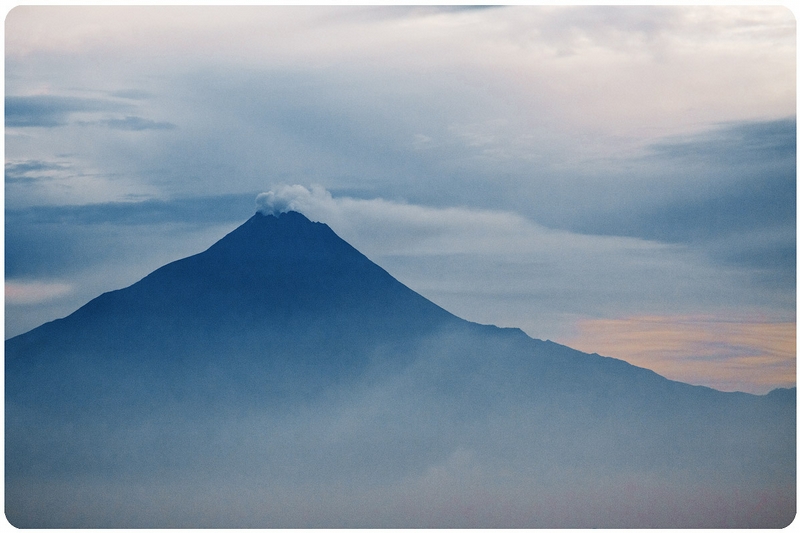
1006 was a fateful year for Borobudur. A strong earthquake partially destroyed the temple and then the volcanic ash of Merapi covered everything with a thick layer. Its restoration began in 1814 when an Englishman, Thomas Raffles, rediscovered this place. In 1969 the second stage of its restoration began. The temple was taken to pieces. All the stones and statues were cleaned and covered with a special protection layer and then built back. On average it took up to 15 years to finish the work.
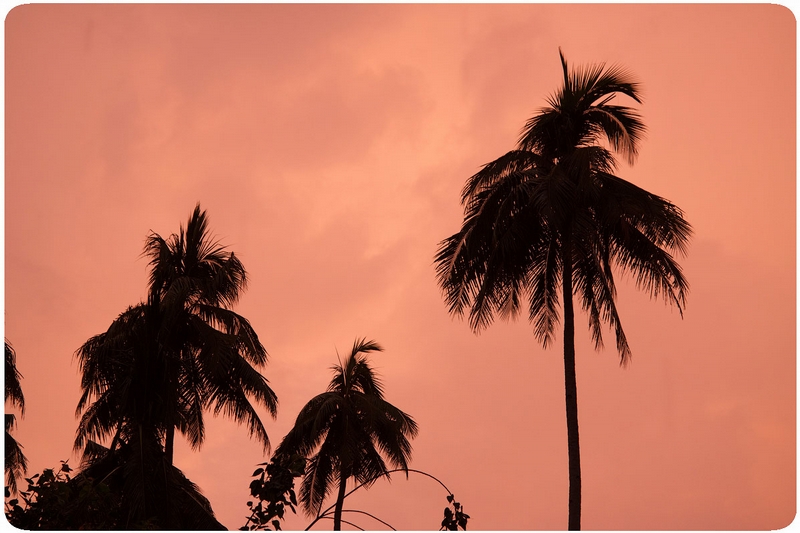
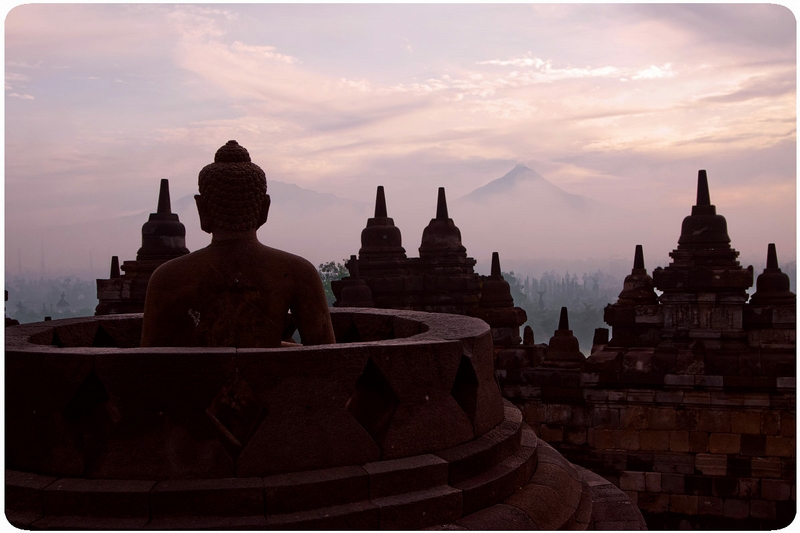

And this is another side of Indonesia, both beautiful and terrible. Indonesia holds the world's record for the quantity and activity of its volcanoes. There are about 600 volcanoes there, 129 of them are active.
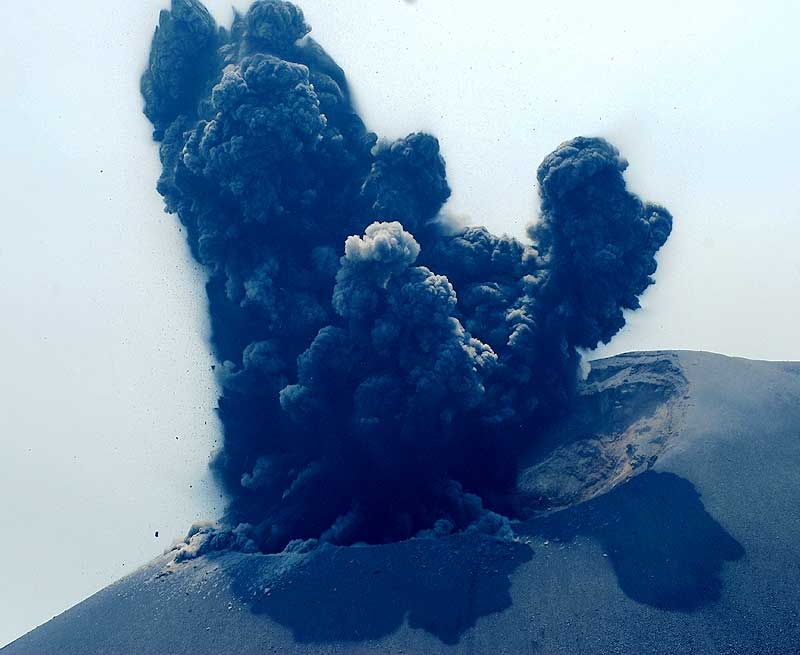
The most powerful eruption in the human history was on the 10th of April in 1815 on Sumbawa Island when Tambora volcano erupted 50 cubic kilometers of once hard rocks. The whole island was covered with a meter layer of ash. People living 300 km far from the volcano had to live for 3 days in a complete darkness. About 100.000 people died (including the following sacrifices of hunger).
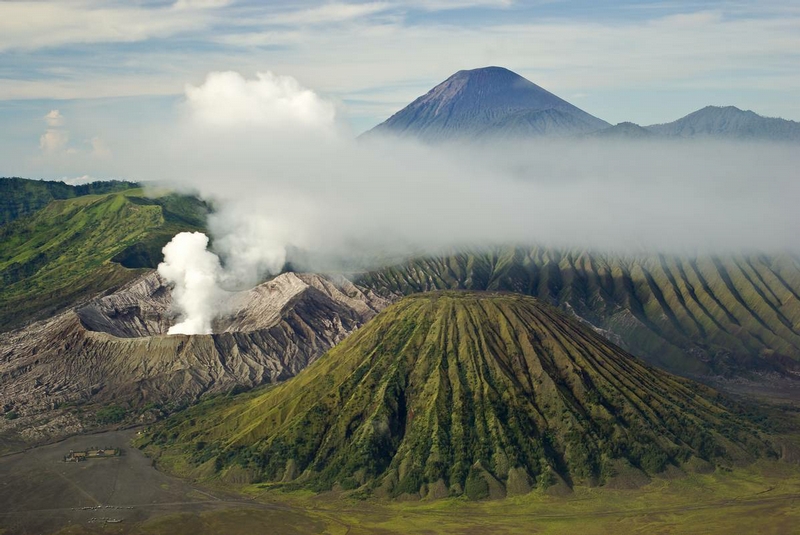
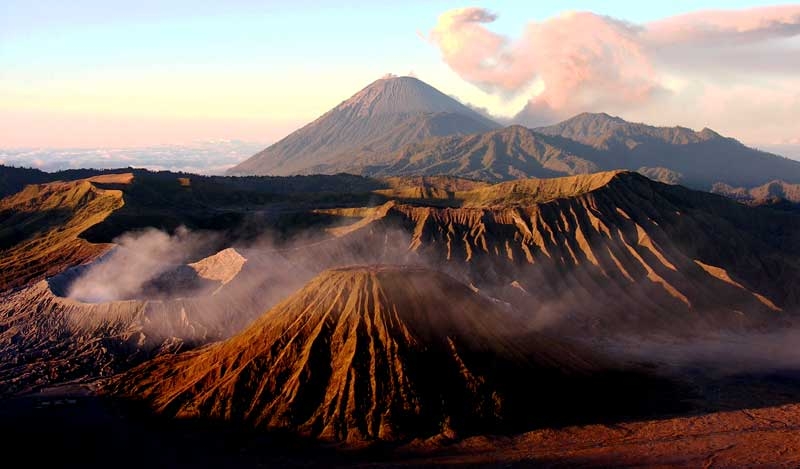
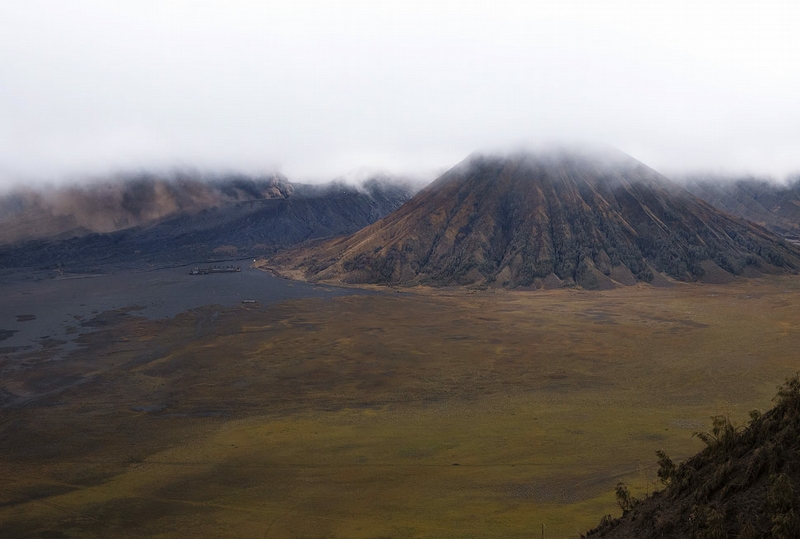

This time Bromo volcano is active and local residents are all wearing masks.
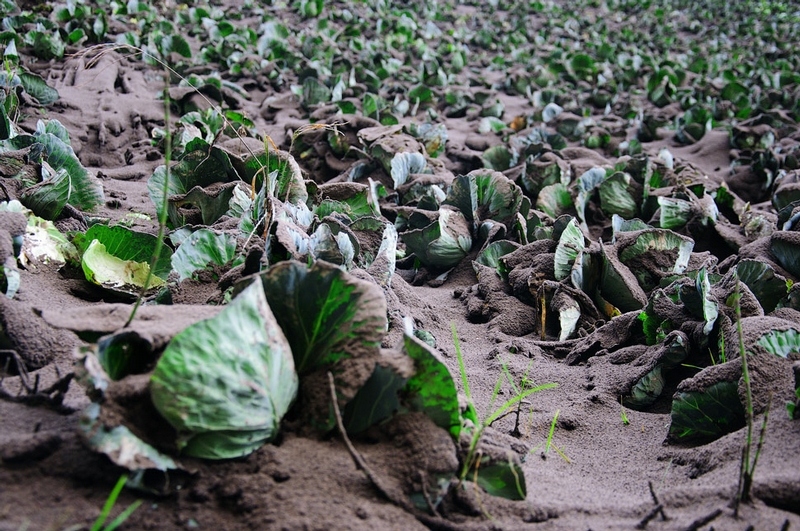
Eruption is a real disaster for locals as it destroys their crops.
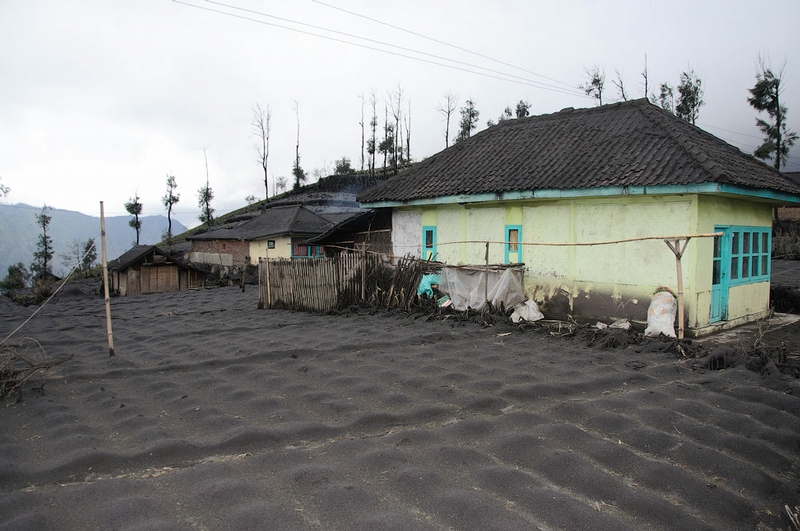
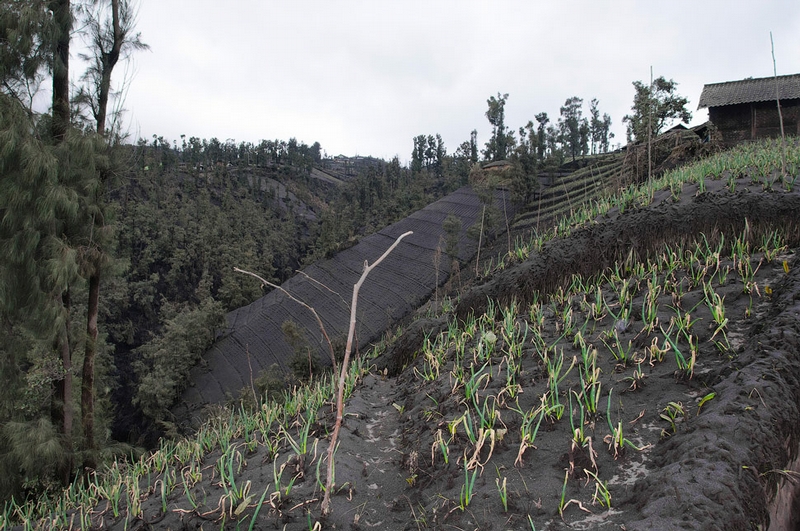
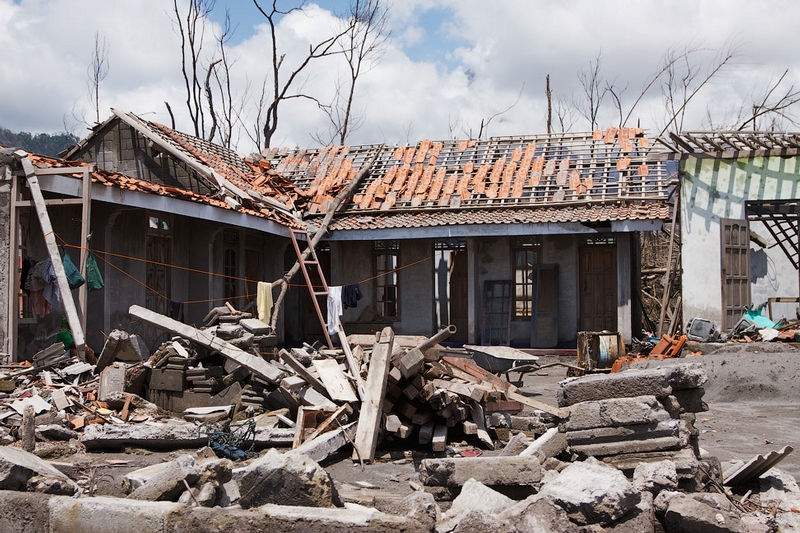
And if one doesn't clean his roof from this seemingly harmless powder, the rain will soon turn it into the heavy thick mud.
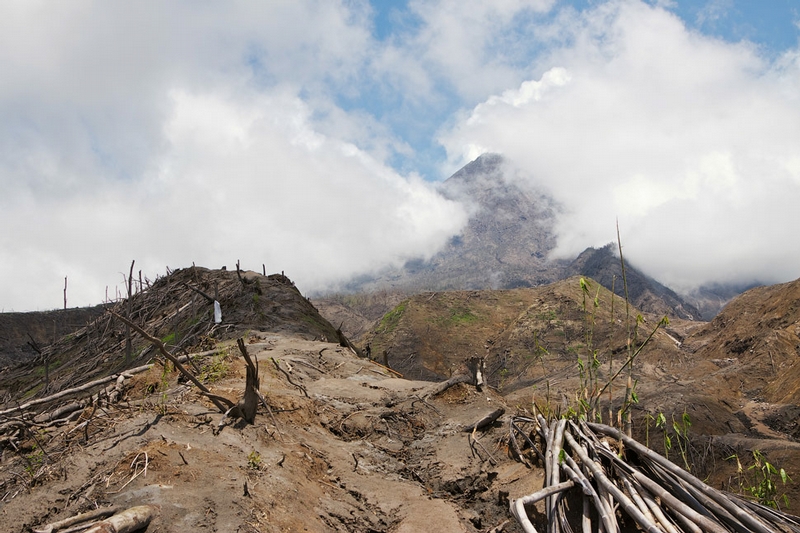
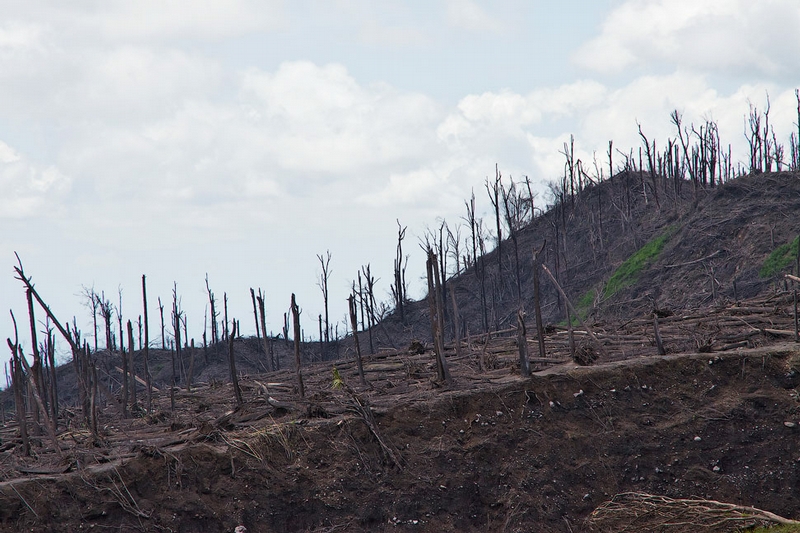
Consequences...

The ash soaks the water and flows downward. If there is too much of it the flashy streams are formed which wash the ground and destroy everything on their way.

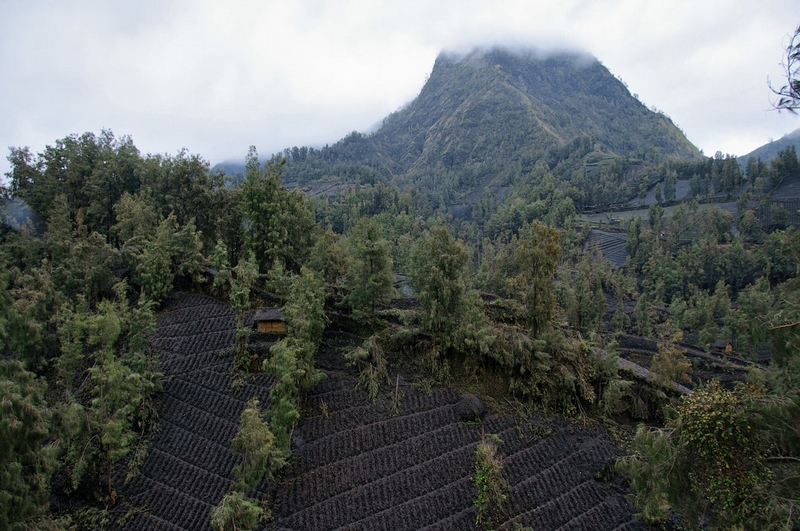
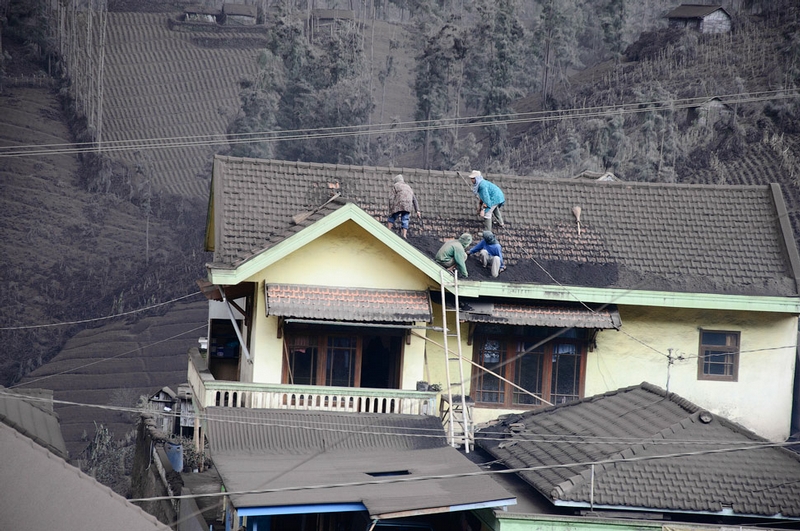
All day long people clean the roofs from the ash.
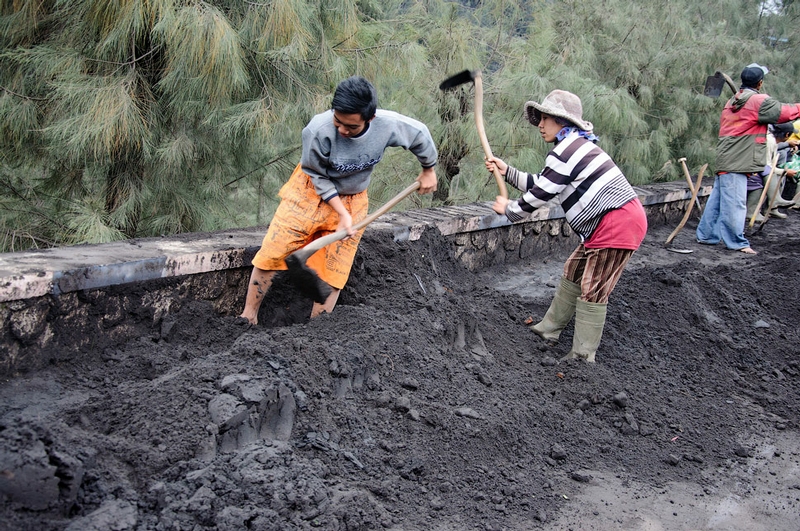
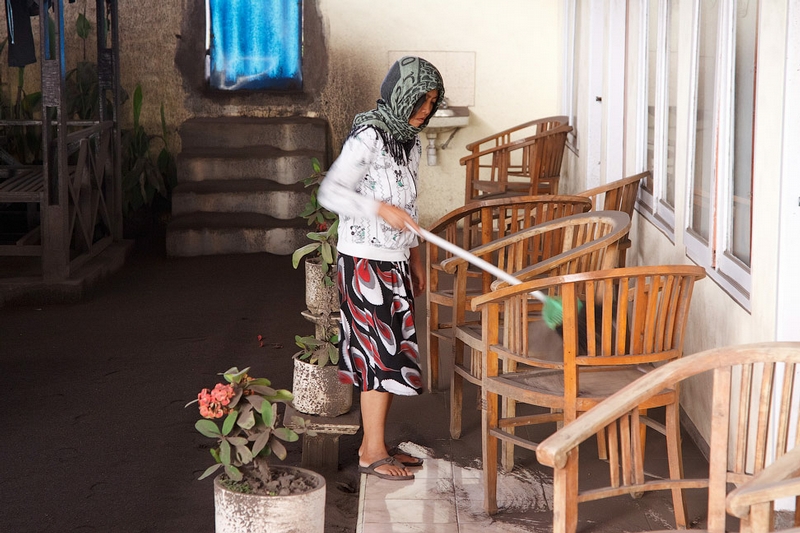
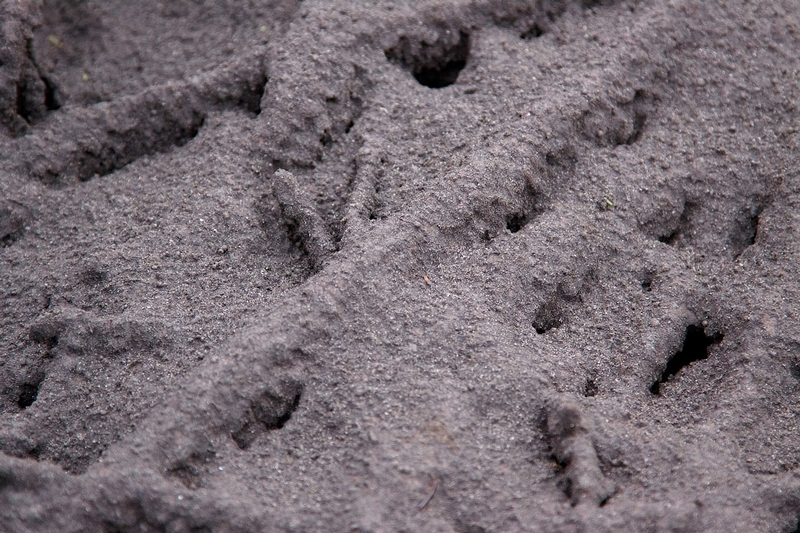
What is interesting, the ash is full of minerals good for the plants. That's why people always return to even such dangerous places afterwards.
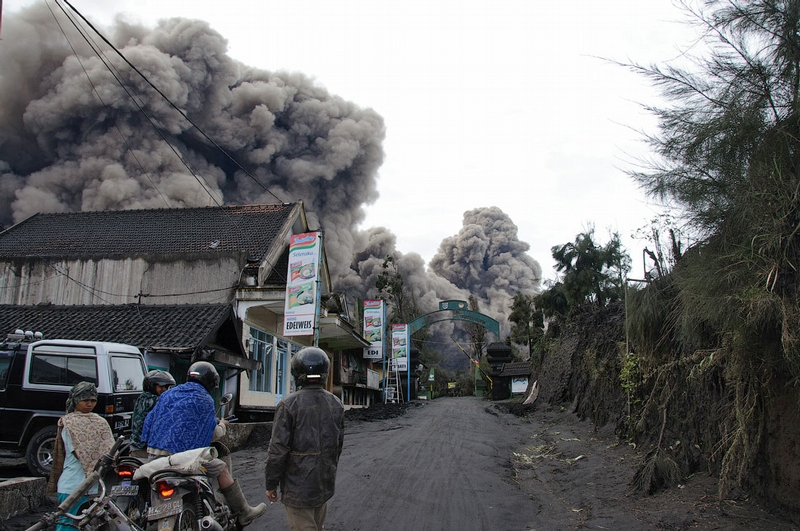
That's how the nearest to Bromo village looks.
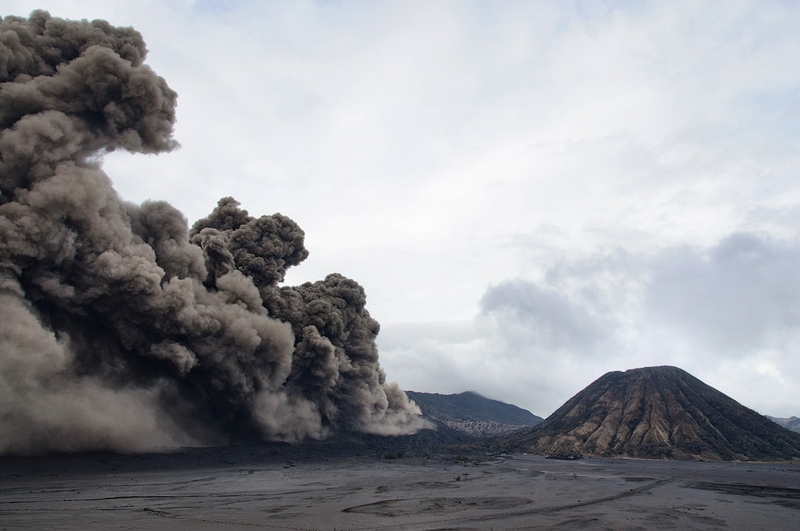
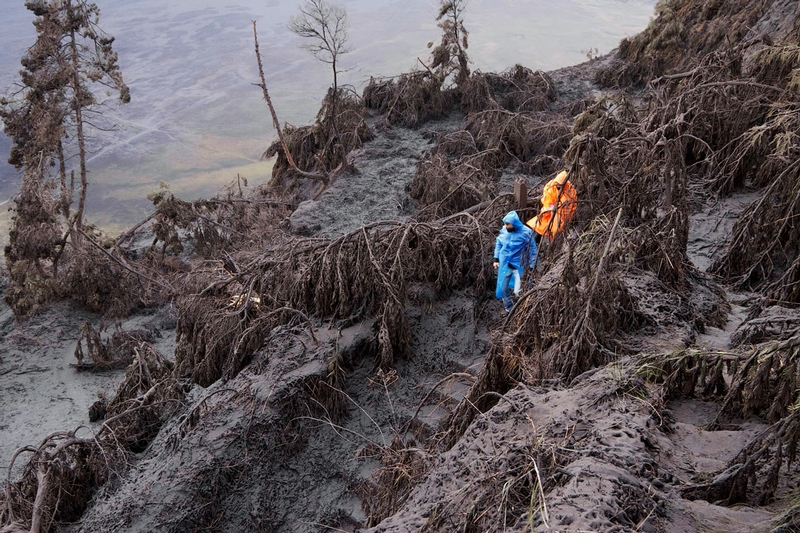
The trees are broken.

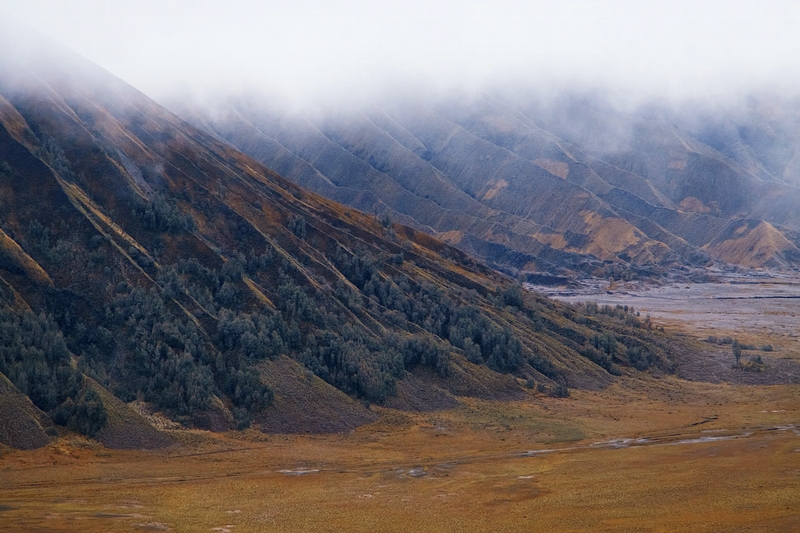
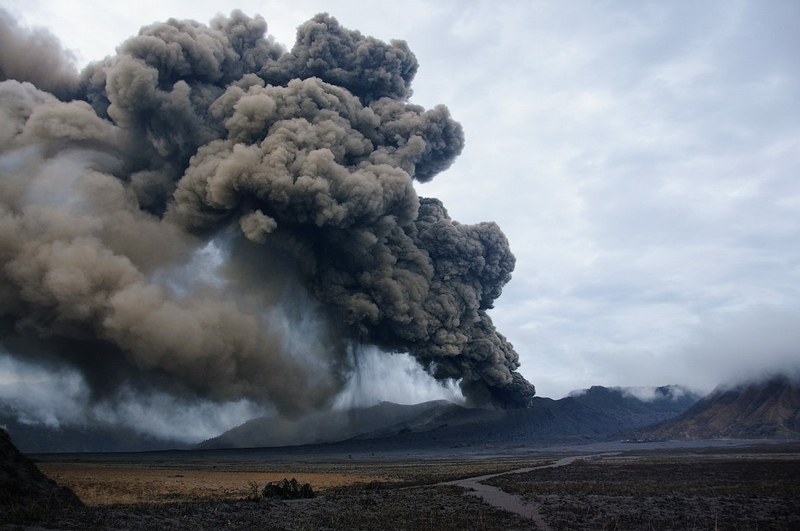
Pay attention to the black streams of ash falling down from the cloud.
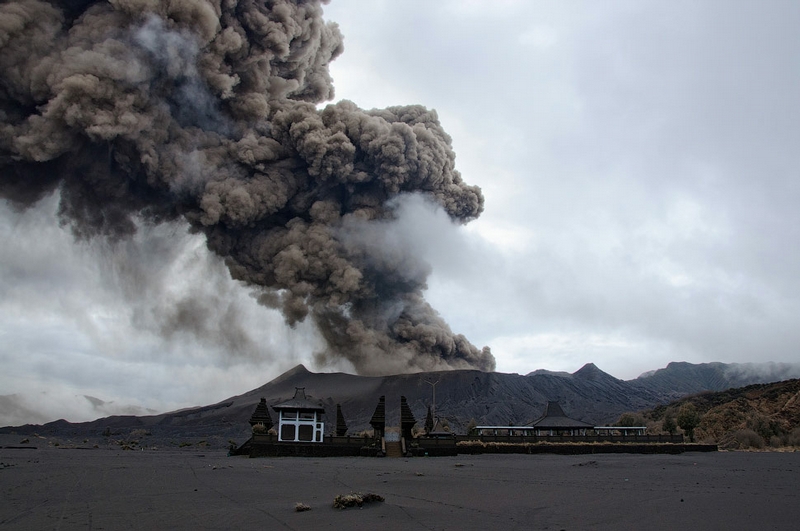
There is a temple at the foot of Bromo. Its residents believe the spirits of their dead ancestors live inside the volcano.
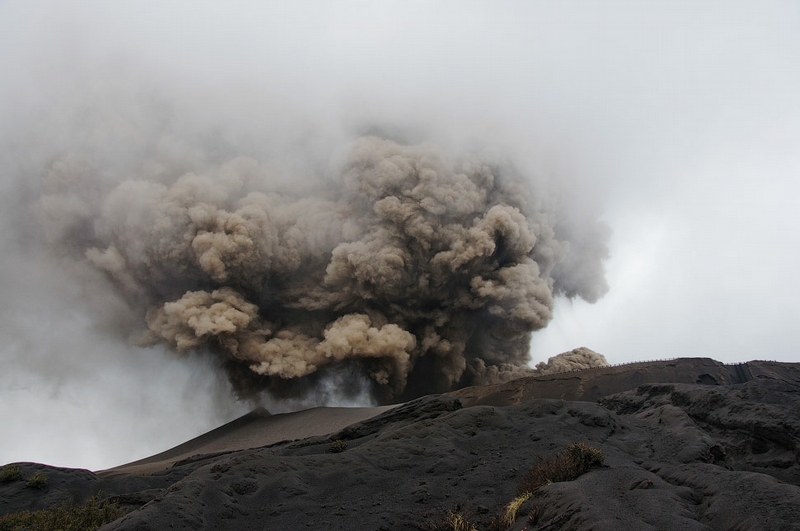
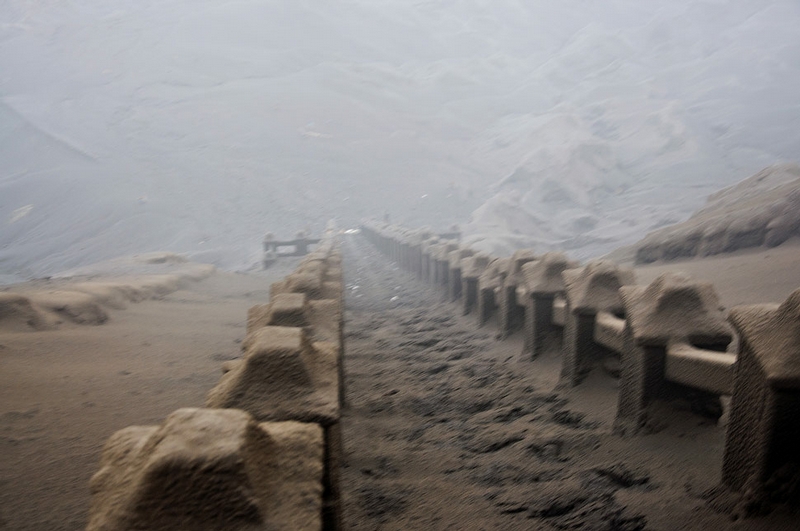
The stairs to the observation site.
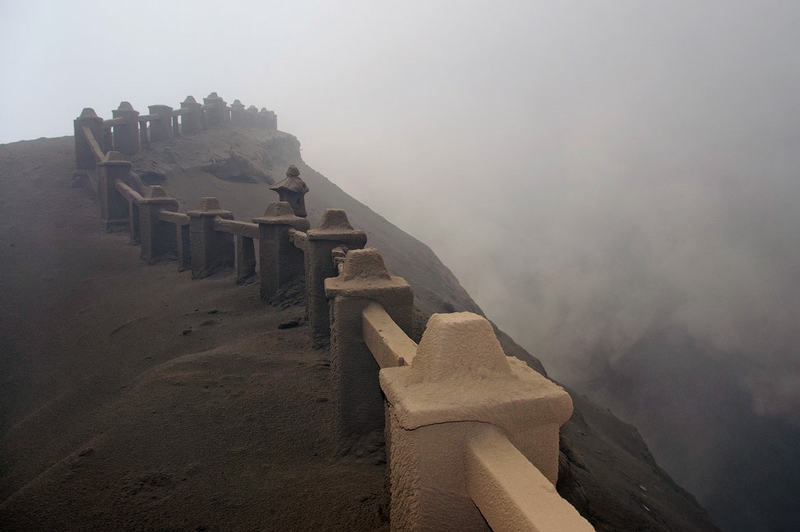
All is covered with ash.
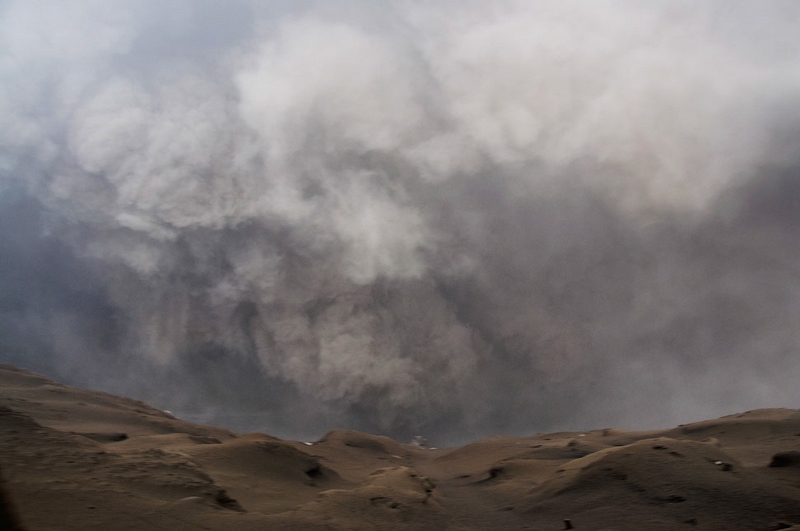
No lava inside, only smoke.

































































